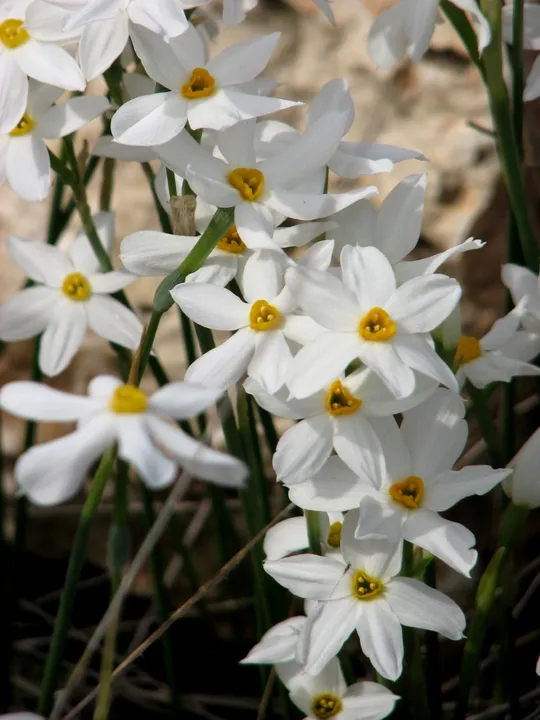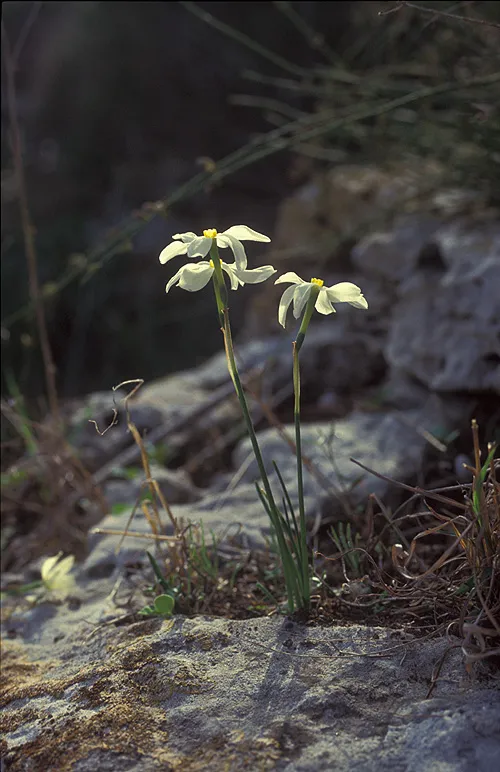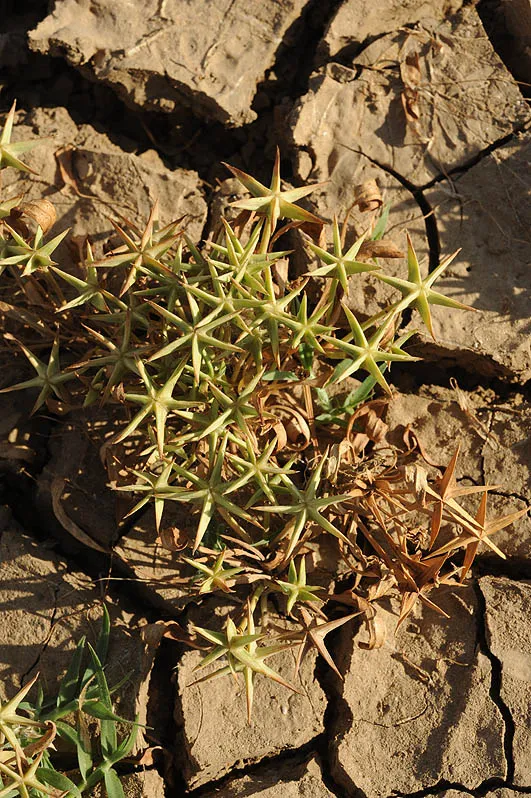Late Flowering Narcissus
Narcissus deficiens




In Israel Narcissus serotinus
grows on the Carmel Coast and the northern Sharon at 18 documented sites.
According to estimates, there are a total of 22 sites. The northernmost sites
are located on the Carmel Coast in the HaHotrim Beach and HaBonim Beach area.
The largest populations are located on the calcareous sandstone ridges in the
area around Ma’agan Mikhael-Bet Hanania.
In the northern Sharon it has almost disappeared from the Binyamina and Pardes
Hanna area, where carpets of N. serotinus had been
previously documented. The southern sites in Israel are located in the Hadera Forest
and its surroundings and on Zeta Hill ("Tulip Hill") between Bet
Eliezer and Kfar Brandeis (Hilik Mador Haim). Some of the populations that were
known in this area are now extinct.
Pockets of dark soil between calcareous sandstone
rocks, nazzazic hamra and marshy soil covered in sand,
sandy areas and marsh edges.
The genus Narcissus consists of about 60 species, most of them growing in
the Mediterranean Basin. Its center of distribution is located in the Iberian
Peninsula, where its biodiversity is greatest. Most of the species bloom early
in spring and are known for their heterostyly – genetic variation within
a population of in which the relative height of the stigmas and anthers differs.
Pollination can take place only between stigmas and anthers of identical height,
which ensures cross-pollination. In Israel, only two species grow in the wild –
N. tazetta and N. serotinus. Both have the broadest
distribution among the Narcissus species, and they are found from Spain
and Morocco down to Israel. N. serotinus has no close
species in the genus, and is the only one in the Serotini section (Blanchard,
1990).
·
The number of regions in which Narcissus serotinus appears is
stable, and it grows today, as in the past, on the Carmel Coast and in the Sharon.
The number and location of its sites in the Carmel Coast region is apparently
stable, but in the Sharon the number of sites has declined and at some of the
sites on which the plant was recorded in the past, around Binyamina, Pardes
Hanna and Hadera it is now extinct.
·
N. serotinus usually appears in
clearly defined patches containing hundreds or thousands of plants.
·
Some of the sites, especially in the northern
Sharon are located in inhabited areas. Development activities and land use changes
of natural areas and fallow fields may damage and destroy population patches at
additional sites.
·
N. serotinus is protected by
law in Israel by virtue of being a geophyte. On the Carmel Coast, it is
protected on the Dor-HaBonim Beach nature reserves, Darchemon ruins and the Taninim
Stream, but none of the northern Sharon sites is located in nature reserves.
·
N. serotinus does not appear in
the Red species lists of the Mediterranean countries.
Narcissus serotinus populations in Israel should
be monitored regularly, particularly the sites in the northern Sharon, in the Hadera
area. The areas where there are concentrations of N. serotinus in the Ma’agan Mikhael-Bet Hanania area and near Hadera should
be declared nature reserves or urban reserves.
Narcissus serotinus grows around the
Mediterranean in Spain, France, Italy, Croatia, Greece, Turkey, Syria, Lebanon,
Israel, Morocco, and Algeria and also in Portugal. In the Mediterranean islands,
it is found in Malta, Corsica, Sardinia, Sicily, the Aegean Islands, Crete and
Cyprus.
Narcissus
serotinus is a rare geophyte that grows in Israel only on the Carmel Coast and in the
northern Sharon. It is endangered in Israel because of its relative rarity, the
attractiveness of its flowers, the vulnerability of its habitat and by virtue
of being a Mediterranean peripheral species that reaches the southern limit of
its range is in Israel.
פולק, ג., מדור-חיים, י. וגליל,י. 1985. צמחים נדירים בארץ/נרקיס אפיל. רתם 16: 46-54.
Blanchard, J. 1990. Narcissus – A Guide to Wild Daffodils. Alpine Garden Society.
Current Occupancy Map
| 1000 squre meter pixel | 5000 squre meter pixel | 10000 squre meter pixel | |
|---|---|---|---|
| number of observations | 0 | 0 | 0 |
| in total pixels | 0 | 0 | 0 |
| Family | Amaryllidaceae |
| Classification | On the endangered species list |
| Ecosystem | Mediterranean |
| Chorotype | Mediterranean |
| Conservation Site | Ma’agan Mikhael Gravel and Bet Hanania |
| Rarity |
1
2
6
|
|---|---|
| Vulnerability |
0
3
4
|
| Attractiveness |
0
3
4
|
| Endemism |
0
0
4
|
| Red number |
1
4.7
10
|
| Peripherality | W |
| IUCN category | DD EW EX LC CR EN VU NT |
| Threat Definition according to the red book | Endangered |
 Based on:
Based on:






